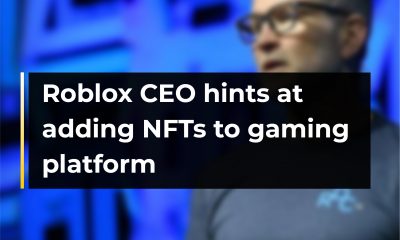News
Why on-chain games will rise in popularity

Gaming is one aspect of human social life that’s been disrupted by technology. In today’s world, consumers are becoming more and more aware of on-chain games. On-chain games are games designed on the blockchain and possess an open and more transparent system where gamers can truly own in-game assets. With the help of cryptography, and smart contracts, a new kind of ownership is being deployed in today’s games.
According to a16z, the rise of on-chain games over the next decade can be traceable to the behavior of consumers and the result of these behaviors. For example, consumers spent $67.9 billion on digital in-game purchases in 2022 alone, more than 700 new crypto games were launched in 2022, and NFT creators have earned more than $1.9 billion in royalty revenues. And most on-chain games make use of NFTs.
As more games are played online, on-chain games give access to ownership of in-game assets which are interoperable between platforms, and reward systems give gamers a unique opportunity to earn money while having fun, more on-chain games will be developed and launched over time.
Fight for royalty in Web3
a16z also added in the report one challenge faced in the NFT space is transfer-based royalty. It has not been fully implemented because of the absence of efficient on-chain enforcement.
However, the report added that there are various solutions created to solve this problem for the crypto community as it appears that the NFT market is not depreciating despite a bear speculative period from Q3 of 2022. The number of NFTs buys is increasing, the a16z noted.
It can be recalled that in Q4 of 2022, several NFT marketplaces and NFT projects such as Magic Eden, y00ts, OpenSea, and X2Y2 debated on the viability of enforcing royalty for creators.
“Light” clients will accelerate the adoption of mobile web3 frontends
Another projection revealed in the report is that users with lighter needs will force developers to adopt mobile Web3 frontends. While these light users are not demanding large block space, the decentralized features of Web3 keep attracting them.
The effect is that as more efficient scaling technologies are released that can grant more blockspace, fees that are meant to increase because of the rise in demand will decrease as supply matches with the demand.
a16z noted that despite the negative turnout of the crypto market in the last one year, the number of active addresses is growing steadily as web3 adoption increases, demand for stablecoins remains high, and DEXes are trading over $100B monthly.
Read also;
Blockchain gaming dominance skyrockets in Q1, 2023 — Report
























